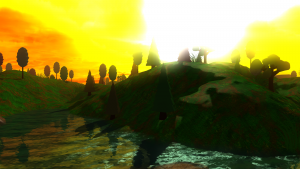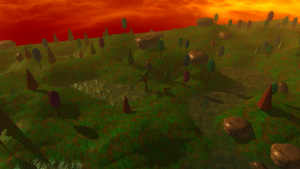Bloom Filter
The bloom filter makes bright objects glow and bleed through other objects positioned in between them and the camera. It is a common post-processing effect used all the time in video games and animated movies. The demo supports a couple of configuration options that control the intensity and behavior of the filter, here are some screenshots with different settings:
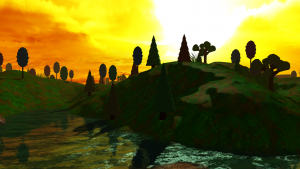 |
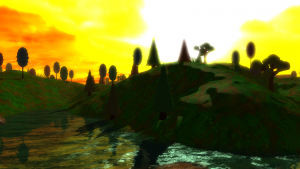 |
I particularly like the glow effect that this brings to the specular reflections on the water surface, although to really appreciate that you need to run the demo and see it in motion.
Cascaded Shadow Maps
I should really write a post about basic shadow mapping before going into the details of Cascaded Shadow Maps, so for now I’ll just focus on the problem they try to solve.
One of the problems with shadow mapping is rendering high resolution shadows, specially for shadows that are rendered close to the camera. Generally, basic shadow mapping provides two ways in which we can improve the resolution of the shadows we render:
1. Increase the resolution of the shadow map textures. This one is obvious but comes at a high performance (and memory) hit.
2. Reduce the distance at which we can render shadows. But this is not ideal of course.
One compromise solution is to notice that, as usual with 3D computer graphics, it is far more important to render nearby objects in high quality than distant ones.
Cascaded Shadow Maps allow us to use different levels of detail for shadows that are rendered at different distances from the camera. Instead of having a single shadow map for all the shadows, we split the viewing frustum into slices and render shadows in each slice to a different shadow map.
There are two immediate benefits of this technique:
1. We have flexibility to define the resolution of the shadow maps for each level of the cascade, allowing us, for example, to increase the resolution of the levels closest to the camera and maybe reduce those that are further away.
2. Each level only records shadows in a slice of the viewing frustum, which increases shadow resolution even if we keep the same texture resolution we used with the original shadow map implementation for each shadow map level.
This approach also has some issues:
1. We need to render multiple shadow maps, which can be a serious performance hit depending on the resolutions of the shadow maps involved. This is why we usually lower the resolution of the shadow maps as distance from the camera increases.
2. As we move closer to or further from shadowed objects we can see the changes in shadow quality pop-in. Of course we can control this by avoiding drastic quality changes between consecutive levels in the cascade.
Here is an example that illustrates the second issue (in this case I have lowered the resolution of the 2nd and 3d cascade levels to 50% and 25% respectively so the effect was more obvious). The screenshots show the rendering of the shadows at different distances. We can see how the shadows in the close-up shot are very sharp and as the distance increases they become blurrier due to the use of a lower resolution shadow map:
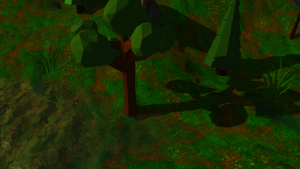 |
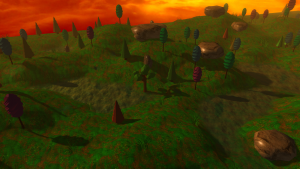 |
The demo supports up to 4 shadow map levels although the default configuration is to use 3. The resolution of each level can be configured separately too, in the default configuration I lowered the shadow resolution of the second and third levels to 75% and 50% respectively. If we configure the demo to run on a single level (with 100% texture resolution), we are back to the original shadow map implementation, so it is easy to experiment with both techniques.
I intend to cover the details behind shadow mapping and the implementation of the bloom filter in more detail in a future post, so again, stay tuned for more!
